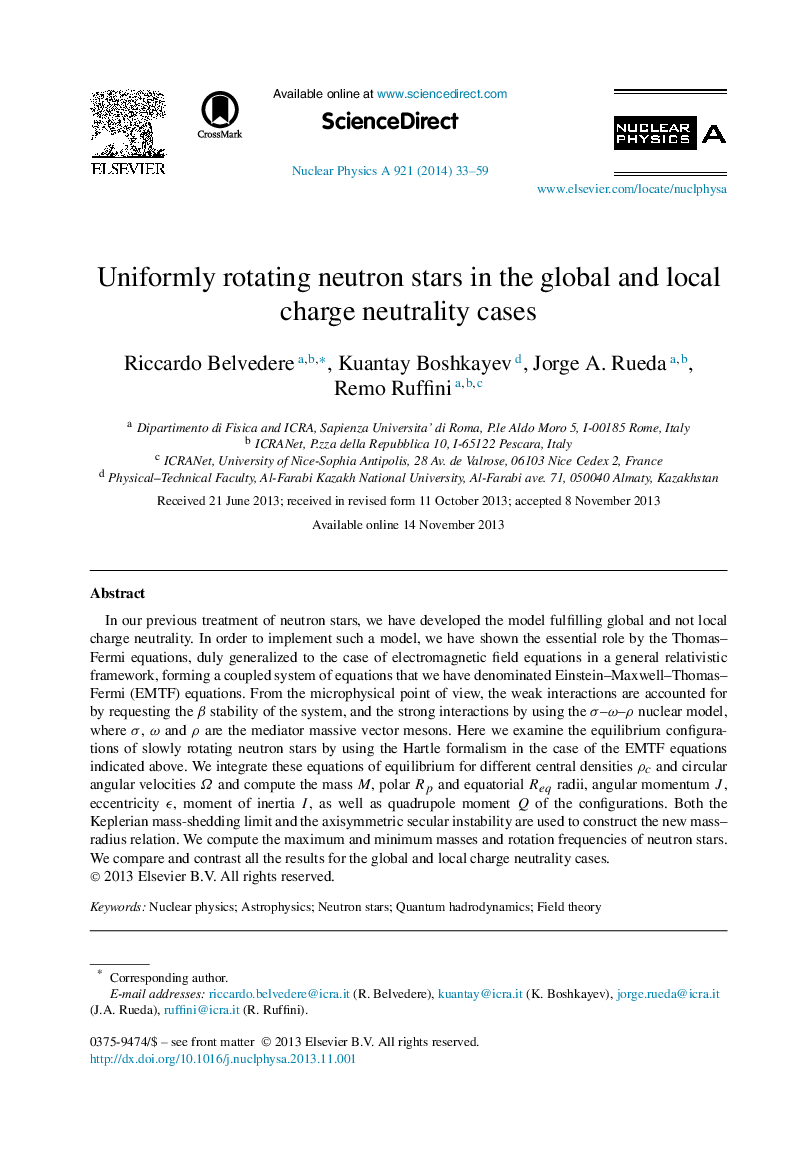| Article ID | Journal | Published Year | Pages | File Type |
|---|---|---|---|---|
| 8183351 | Nuclear Physics A | 2014 | 27 Pages |
Abstract
In our previous treatment of neutron stars, we have developed the model fulfilling global and not local charge neutrality. In order to implement such a model, we have shown the essential role by the Thomas-Fermi equations, duly generalized to the case of electromagnetic field equations in a general relativistic framework, forming a coupled system of equations that we have denominated Einstein-Maxwell-Thomas-Fermi (EMTF) equations. From the microphysical point of view, the weak interactions are accounted for by requesting the β stability of the system, and the strong interactions by using the Ï-Ï-Ï nuclear model, where Ï, Ï and Ï are the mediator massive vector mesons. Here we examine the equilibrium configurations of slowly rotating neutron stars by using the Hartle formalism in the case of the EMTF equations indicated above. We integrate these equations of equilibrium for different central densities Ïc and circular angular velocities Ω and compute the mass M, polar Rp and equatorial Req radii, angular momentum J, eccentricity ϵ, moment of inertia I, as well as quadrupole moment Q of the configurations. Both the Keplerian mass-shedding limit and the axisymmetric secular instability are used to construct the new mass-radius relation. We compute the maximum and minimum masses and rotation frequencies of neutron stars. We compare and contrast all the results for the global and local charge neutrality cases.
Related Topics
Physical Sciences and Engineering
Physics and Astronomy
Nuclear and High Energy Physics
Authors
Riccardo Belvedere, Kuantay Boshkayev, Jorge A. Rueda, Remo Ruffini,
